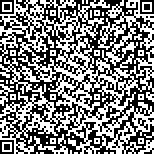| 摘要: |
| 目的 卫星影像已经被广泛用于小麦、玉米、水稻等种植范围较广的粮食农作物空间分布信息提取和面积估算。但是,利用遥感影像研究苹果园光谱与纹理特征,获取苹果园地面积与分布的应用研究较少。以往的研究已经指出高分纹理特征有利于苹果园地分类,但是中分影像的数据保障性会更强,可提供时序的光谱特征,因此,文章提出了一种综合利用非最佳观测期获得的高分辨率影像纹理信息和多时相中分辨率影像光谱信息提取苹果园地的方法。方法 该方法以GF-2号卫星及哨兵卫星数据为数据源,首先利用灰度共生矩阵(GLCM)提取GF-2的纹理特征,然后将提取的GF-2的纹理特征和光谱特征与5期不同时期的哨兵影像相结合,形成5组GF-2纹理和光谱特征与某一期哨兵影像的组合特征(记录为GF-2+单时相哨兵),1组GF-2纹理和光谱特征与所有哨兵影像的组合特征(记录为GF-2+多时相哨兵),以7组不同的组合特征(GF-2纹理和光谱特征、5组GF-2+单相哨兵和1组GF-2+多时相哨兵)为输入,使用3种不同的分类方法(C4.5、CART和Random Forest)提取苹果园地的分布,比较分析不同特征组合对苹果园分类精度的影响以及3种不同决策树学习方法的优劣。结果 苹果园提取时,GF-2+单时相哨兵特征组合与GF-2+多时相哨兵特征组合明显优于GF-2纹理和光谱特征组合,GF-2+4月(花期)哨兵是最佳特征组合,其苹果园的分类精度和整个研究区域的总体精度分别比GF-2单独分类提高至少8.14%和8.29%,比GF-2+多时相哨兵分类提高至少1.14%和0.95%。当采用相同组合特征时,随机森林分类方法提取苹果园地效果最好,苹果园提取精度均在90%以上。结论 利用非最优时相高分影像与花期中分影像提取苹果园能够得到最优的精度;如果没有花期中分影像,其他时相中分影像与非最优时相高分影像组合也能够得到比较优的精度。 |
| 关键词: GF-2号 哨兵-2A 苹果园地 纹理特征 光谱特征 决策树分类 |
| DOI:10.7621/cjarrp.1005-9121.20220814 |
| 分类号:TP753;TP79;S127 |
| 基金项目:高分辨率对地观测系统重大专项(民用部分)“GF-7卫星高精度农作物信息提取技术”(11-Y20A16-9001-17/18);国家重点研发计划项目“地震风险暴露模型研究”(2018YFC1504603) |
|
| APPLE ORCHARD EXTRACTION BASED ON HIGH RESOLUTION IMAGES AND MULTI-TEMPORAL MID-RESOLUTION IMAGES |
|
Dai Jiajia
|
|
Faculty of Geographical Science, Beijing Normal University, Beijing 100875, China
|
| Abstract: |
| Satellite images have been widely used to extract the spatial distribution information and estimate the area of grain crops with a wide planting range, such as wheat, corn and rice. However, few studies on spectral and texture feature analysis, area estimation and distribution extraction of apple orchard by using remote sensing images. Previous studies have pointed out that the texture features of high-resolution images are conducive to apple orchard classification, but the data of median-resolution images are more accessible and can provide temporal spectral features. Therefore, this paper develops a method to extract apple orchard by comprehensively using texture information of high-resolution images obtained in non-optimal observation period and spectral information of multi-temporal median-resolution images. GF-2 and Sentinel satellite data were used as high and median resolution images respectively in this study to test our method. Firstly, the gray level co-occurrence matrix (GLCM) was used to extract the texture features from GF-2. Then the extracted texture features and spectral features of GF-2 were combined with five Sentinel images obtained from different times to form five combined features (simply record as GF-2 + single-phase sentinel) by overlaying the GF-2 texture and spectral features with the Sentinel image obtained at each certain time; a new combined features (simply record as GF-2 + multi-phase sentinel) by overlaying the GF-2 texture and spectral features with all Sentinel images. Then, seven different combined features (GF-2 texture and spectral features, 5 GF-2 + single-phase sentinel and 1 GF-2 + multi-phase sentinel) were inputted into three different classifiers (C4.5, CART and Random Forest) to extract the distribution of apple orchard. The effects of different feature combinations on classification accuracy of apple orchard and the advantages and disadvantages of three different decision tree learning methods were compared and analyzed. The results were listed as follows. GF-2 + single-phase sentinel and GF-2 + multi-phase sentinel was significantly both better than GF-2 texture and spectral features when extracted for apple orchards. GF-2 + single-phase sentinel obtained in April (flowering phase) was the best feature combination. The classification accuracy of apple orchard and overall accuracy of whole study area under the best feature combination were at least 8.14% and 8.29% higher than those of GF2 alone, and at least 1.14% and 0.95% higher than those of GF-2 + multi-phase sentinel, respectively. When the same classification features were used, the accuracy of random forest classification method was the highest (more than 90%) for all different feature combinations. The optimal classification accuracy of apple orchard can be obtained when comprehensively using high-resolution image obtained in non-optimal observation period and median-resolution images obtained in flowering phase. If image in apple flowering phase cannot be obtained, the combination of other time-phase median-resolution images and high-resolution image obtained in non-optimal observation period can also obtain ideal accuracy. |
| Key words: GF-2 sentinel-2A apple orchard texture features spectral features decision tree classification |

